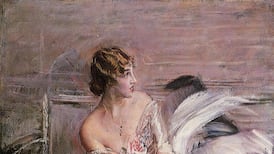Overheard whining when I was nine years of age, I said to my sister: “My life would be fine if it wasn’t for ballet.”
I’m not sure what sort of lifestyle a middle class kid in Cork enjoyed more than 50 years ago but I was more interested in climbing trees than being instructed in the graceful art of ballet dancing by the formidable Joan Denise Moriarty.
She founded the amateur Cork Ballet Company in 1947 and the Irish Ballet Company which was later renamed as the Irish National Ballet.
It was Ireland’s only full-time professional ballet company for much of its existence until its closure in 1989 due to losing its Arts Council funding.
READ MORE
Today, a former pupil of Moriarty, Alan Foley, is the artistic director of Cork City Ballet and maintains his mentor’s tradition of hosting Ballet Week in Cork during November.
From November 6th-8th, Swan Lake will be performed at the Cork Opera House. This Tchaikovsky favourite has a cast of 52.
Foley has been without Arts Council funding since 2011. He has a budget of €178,000, much of which covers the wages of the dancers, many of whom are international, as well as their accommodation costs.
When Moriarty was interviewed by Irish Times writer, Elgy Gillespie, in November 1972 in advance of a production of Swan Lake at the Cork Opera House and at the Gaiety Theatre, she said it was going “to lose hundreds and hundreds of pounds”. Moriarty cited the accommodation costs of all the dancers and orchestra members as well as “the special train and the costumes ... everything. But it’s worth it”.

[ The Irish woman reviving ballet in Venice: ‘As a lawyer, ballet became my escape’Opens in new window ]
Gillespie wrote that with her “no nonsense clothes and severe pony tail,” there was “something oddly childlike mixed in with this governess aspect”.
Recalling the miserable hours this ungainly girl endured in the studio of Miss Moriarty (as we called her) on Emmet Place, with its portrait of the ballet mistress, she was definitely more governess than childlike.
A dance officer from the Arts Council remarked that Moriarty ran her company “like a Victorian boarding school”.
With her long auburn hair usually tied back and floating chiffon scarves, the aloof Moriarty had a regal presence. She carried herself well and was concerned with her pupils’ posture. I distinctly remember Miss Moriarty placing a cane along the length of my back – and telling me to hold in my derriere. I couldn’t. I was never going to join the ranks of the corps de ballet.
“Why is it that Irish girls walk so badly, as if they are ashamed of their bodies?” Moriarty would ask. Shame, believe it or not, was associated with ballet in some ultra-conservative circles back in Ireland’s drab repressed days.
In 1951, before my time, the Cork Ballet Company was denounced from the pulpit. Moriarty was attending Sunday Mass at St Peter and Paul’s Church in Cork city when she heard the priest rail against the “scandalous” scenes at the Cork Opera House the night before. A semi-nude female figure had offended “against decency”. The priest was referring to the costume worn by Swanhilda in Coppelia.
It took some time before tutus and leotards were no longer regarded as indecent.
[ How The Nutcracker became the world’s most popular balletOpens in new window ]
Moriarty’s origins are somewhat mysterious. It is believed she was born to a family with roots in Mallow in 1912 or 1913, but it’s not clear where. According to The Secret Life of Joan Denise Moriarty by Sandra MacLiammoir, she was born illegitimately to a Scottish earl and the daughter of a Lord Justice of Appeal. That sounds somewhat romantic and vaguely exotic but most biographical sources including the Dictionary of Irish Biography list her parents and upbringing with no mention of illegitimacy or controversy regarding her birth.
According to MacLiammoir, Moriarty seemed to have no qualifications as a dancer. In Ruth Fleischmann’s biography of Moriarty (who collaborated with Aloys Fleischmann, father of Ruth and close friend of Moriarty), she studied ballet with Marie Rambert whose dance company was based in London.
Moriarty would reportedly often tell the story of how her studies with Rambert came to an end. She contracted scarlet fever at the age of fourteen and was confined to bed for some months. During that time she grew to her great height of nearly six feet. When Moriarty returned to class, Rambert noticed how tall she had become and told her to leave, saying there was too much of her there. Very tall girls don’t make ballerinas.
Instead, Moriarty became a teacher of ballet, registered with the Royal Academy of Dancing.
If Moriarty was too tall to tread the boards as a ballet dancer, I was too ungainly. That derriere wasn’t going to disappear. And even if Moriarty lent herself to a bit of myth-making, Ireland’s First Lady of Dance brought her passion to Cork and gained a national and international reputation.
Even a tomboy, not cut out for ballet, would give her credit for that.













